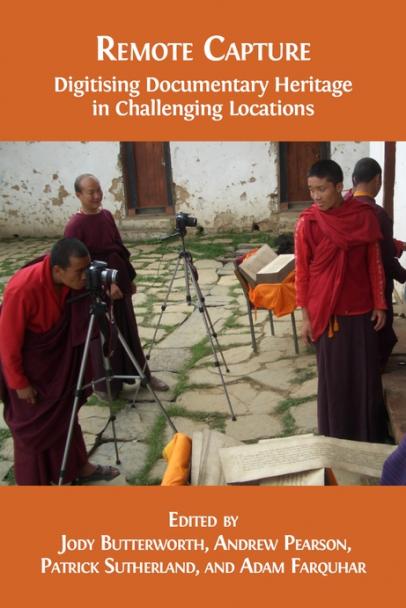Book: "Remote Capture: Digitising Documentary Heritage in Challenging Locations"
 OpenBook Publishers has recently published Remote Capture: Digitising Documentary Heritage in Challenging Locations. The book, edited by Jody Butterworth, Andrew Pearson, Patrick Sutherland and Adam Farquhar, draws on the experience and projects supported by the British Library's Endangered Archives Programme (EAP).
Remote Capture: Digitising Documentary Heritage in Challenging Locations may be seen as a must-read how-to guide for anyone planning to embark on a scholarly digitisation project. Tailored to the specifications of EAP projects, it is full of sound, practical advice about planning and carrying out a successful digitisation project in potentially challenging conditions.
From establishing the scope of the project, via practical considerations about equipment, work routines, staffing, and negotiating local politics, to backing up data and successfully completing work, Remote Capture walks readers through every stage. Bursting with helpful hints, advice and experiences from people who have completed projects everywhere around the globe from Latin America to Africa to Asia, this book offers a taste of the challenges that might be encountered and the best ways to find solutions.
With a particular focus on the process of digitisation, whether using a camera or a scanner, Remote Capture is invaluable reading for anybody considering such a project. It will be particularly useful to those who apply for an EAP grant, but the advice in these pages is necessary for anyone wondering how to go about digitising an archive.
OpenBook Publishers has recently published Remote Capture: Digitising Documentary Heritage in Challenging Locations. The book, edited by Jody Butterworth, Andrew Pearson, Patrick Sutherland and Adam Farquhar, draws on the experience and projects supported by the British Library's Endangered Archives Programme (EAP).
Remote Capture: Digitising Documentary Heritage in Challenging Locations may be seen as a must-read how-to guide for anyone planning to embark on a scholarly digitisation project. Tailored to the specifications of EAP projects, it is full of sound, practical advice about planning and carrying out a successful digitisation project in potentially challenging conditions.
From establishing the scope of the project, via practical considerations about equipment, work routines, staffing, and negotiating local politics, to backing up data and successfully completing work, Remote Capture walks readers through every stage. Bursting with helpful hints, advice and experiences from people who have completed projects everywhere around the globe from Latin America to Africa to Asia, this book offers a taste of the challenges that might be encountered and the best ways to find solutions.
With a particular focus on the process of digitisation, whether using a camera or a scanner, Remote Capture is invaluable reading for anybody considering such a project. It will be particularly useful to those who apply for an EAP grant, but the advice in these pages is necessary for anyone wondering how to go about digitising an archive.
Where to find it?
Remote Capture is available in a range of formats, including free-to-download PDF, epub and mobi, as well as paperback and hardback editions, from OpenBook Publishers at https://www.openbookpublishers.com/product/747 Digital appendices are available on the British Library's EAP website: https://eap.bl.uk/Remote-CaptureSimilar content
30 Jun 2018
posted on
27 Jul 2012
